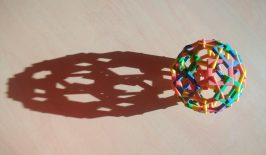Revolutionary technology from a Swedish startup makes it possible to 3D print life-size human ears and noses in about thirty minutes. Could this be the future of organ transplants?
3D printing has opened the door to a broad range of possibilities that were inconceivable just a few years ago. If you can think of something then you’re probably able to make it with a 3D printer: food, clothes, furniture… the list goes on. And now there’s even “bioprinting”, 3D printing with “bio-ink” that lets you make human tissue, and therefore literally 3D print human organs. The company Cellink – the first in the world of its kind to produce a standardised type of ink – is doing exactly that.
Founded a year ago, the Swedish company was founded by Erik Gatenholm, who learned about 3D bioprinters from his father, a chemistry and biopolymer technology professor at Chalmers University in Gothenburg. His father introduced him to Héctor Martínez who was doing a PhD in tissue engineering. Talking with Héctor, he realized that there was a business opportunity in that market: producing and selling bio-ink. At that moment, it was not possible to buy bio-ink, that had to be done by oneself using biomaterials, bioactive molecules and then, adding human cells. So they decided to create and sell one themselves.
“We are the first in the world to produce the so-called bio-ink used as raw material in 3D-printers. And we are one of four companies in the world producing bio-printers. Today we sell in up to thirty countries,” said Erik in an interview to Veckans Affärer magazine.
Cellulose and alginate (extracted from seaweed), are the key components of the ink, which can be mixed with any type of cell to create human tissues. Given about half an hour, a Cellink printer can produce a life-size human nose. Ears are another of their specialities.
“Our major vision is to be able to print entirely new human bodies. We want to write the story of 3D bio-printing and always push the boundary between science fiction and reality. In twenty-five years we’ll be able to print whole new human bodies,” Erik explained.
Currently, their main customers are academic institutions in Europe, Asia and the USA, like MIT and Harvard, that are using them for research. But pharmaceutical companies are also using these bioproducts to run tests.
More complex organs are the next step. Cellink is right now only able to work with skin and cartilage but the startup is working to scale up. But while 3D printed human organs can help to solve the transplant organ shortage, it could be the basis of an ethical debate. If humans become able to produce new types of tissues and organs, could bioprinting be accused of playing God?







